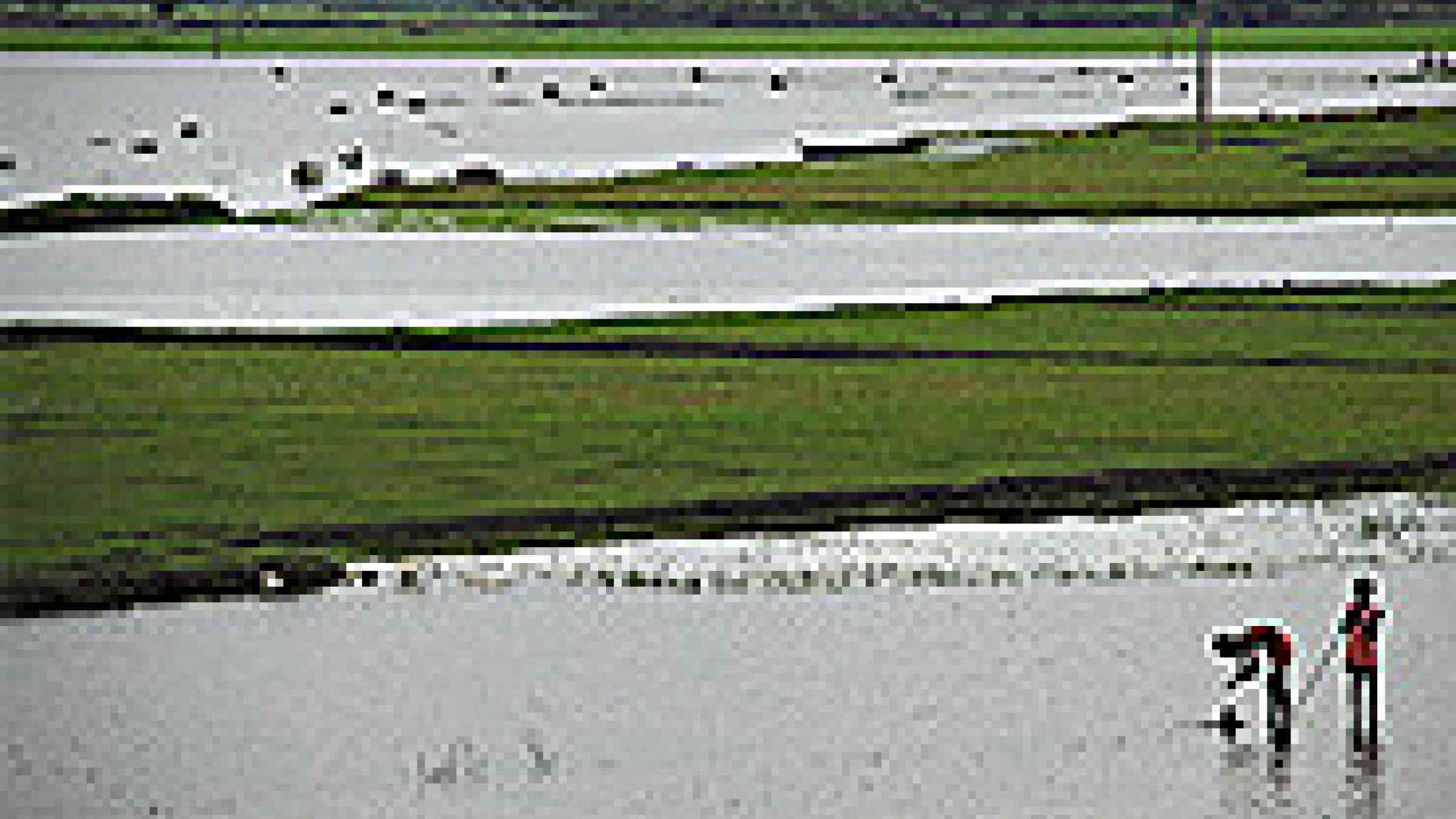Please help us improve PreventionWeb by taking this brief survey. Your input will allow us to better serve the needs of the DRR community.
Maplecroft: 'South Asia most at risk from climate change, Scandinavia safest'

Photo by Flickr user, Amirjina, Creative Commons Attribution-NonCommercial-NoDerivs 2.0 Generic
Big economies of the future - Bangladesh, India, Philippines, Vietnam and Pakistan - most at risk from climate change
A new global ranking, calculating the vulnerability of 170 countries to the impacts of climate change over the next 30 years, identifies Bangladesh and India as the two countries facing the greatest risks to their populations, ecosystems and business environments, whilst Nepal, Afghanistan and Pakistan also feature in the highest risk category.
The new Climate Change Vulnerability Index (CCVI), released by global risks advisory firm Maplecroft, enables organisations to identify areas of risk within their operations, supply chains and investments. It evaluates 42 social, economic and environmental factors to assess national vulnerabilities across three core areas. These include: exposure to climate-related natural disasters and sea-level rise; human sensitivity, in terms of population patterns, development, natural resources, agricultural dependency and conflicts; thirdly, the index assesses future vulnerability by considering the adaptive capacity of a country’s government and infrastructure to combat climate change.
The index rates 16 countries as ‘extreme risk,’ with the South Asian nations of Bangladesh (1), India (2), Nepal (4), Afghanistan (8) and Pakistan (16) among those with the most exposure to climate change, whilst Sri Lanka (34) is rated ‘high risk.’
Other countries rated as ‘extreme risk’ include: Madagascar (3), Mozambique (5), Philippines (6), Haiti (7), Zimbabwe (9), Myanmar (10), Ethiopia (11), Cambodia (12), Vietnam (13), Thailand (14) and Malawi (15). According to Maplecroft, the countries with the most risk are characterised by high levels of poverty, dense populations, exposure to climate-related events; and their reliance on flood and drought prone agricultural land. Africa also features strongly in this group, with the continent home to 12 out of the 25 countries most at risk.
Throughout 2010, changes in weather patterns have resulted in a series of devastating natural disasters, especially in South Asia, where heavy floods in Pakistan affected more than 20 million people (over 10% of the total population) and killed more than 1,700 people. “There is growing evidence climate change is increasing the intensity and frequency of climatic events,” said Environmental Analyst at Maplecroft, Dr Anna Moss. “Very minor changes to temperature can have major impacts on the human environment, including changes to water availability and crop productivity, the loss of land due to sea level rise and the spread of disease.”
Maplecroft rates Bangladesh as the country most at risk due to extreme levels of poverty and a high dependency on agriculture, whilst its government has the lowest capacity of all countries to adapt to predicted changes in the climate. In addition, Bangladesh has a high risk of drought and the highest risk of flooding. This is illustrated during October 2010, when 500,000 people were driven from their homes by flood waters created by storms. However, despite the country’s plethora of problems, the Bangladesh economy grew 88% between 2000 and 2008 and is forecast to by the IMF to grow 5.4% over 2010 and up to 6.2% over the next five years.
India, ranked 2nd, is already one of the world’s power brokers, but climate vulnerability could still adversely affect the country’s appeal as a destination for foreign investment in coming decades. Vulnerability to climate-related events was seen in the build up to the Commonwealth Games, where heavy rains affected the progress of construction of the stadium and athletes’ village. Almost the whole of India has a high or extreme degree of sensitivity to climate change, due to acute population pressure and a consequential strain on natural resources. This is compounded by a high degree of poverty, poor general health and the agricultural dependency of much of the populace.
There are 11 countries considered ‘low risk’ in the index, with Norway (170), Finland (169), Iceland (168), Ireland (167), Sweden (166) and Denmark (165) performing the best. However, Russia (117), USA (129), Germany (131), France (133) and the UK (138) are all rated as ‘medium risk’ countries, whilst China (49), Brazil (81) and Japan (86) feature in the ‘high risk’ category.
For more information contact:
Jason McGeown
Head of Communications
t: +44 (0) 1225 420000
e: jason.mcgeown@maplecroft.com
w: www.maplecroft.com
For out of hours enquiries email: press@maplecroft.com
Explore further
Please note: Content is displayed as last posted by a PreventionWeb community member or editor. The views expressed therein are not necessarily those of UNDRR, PreventionWeb, or its sponsors. See our terms of use
Is this page useful?
Yes No Report an issue on this pageThank you. If you have 2 minutes, we would benefit from additional feedback (link opens in a new window).